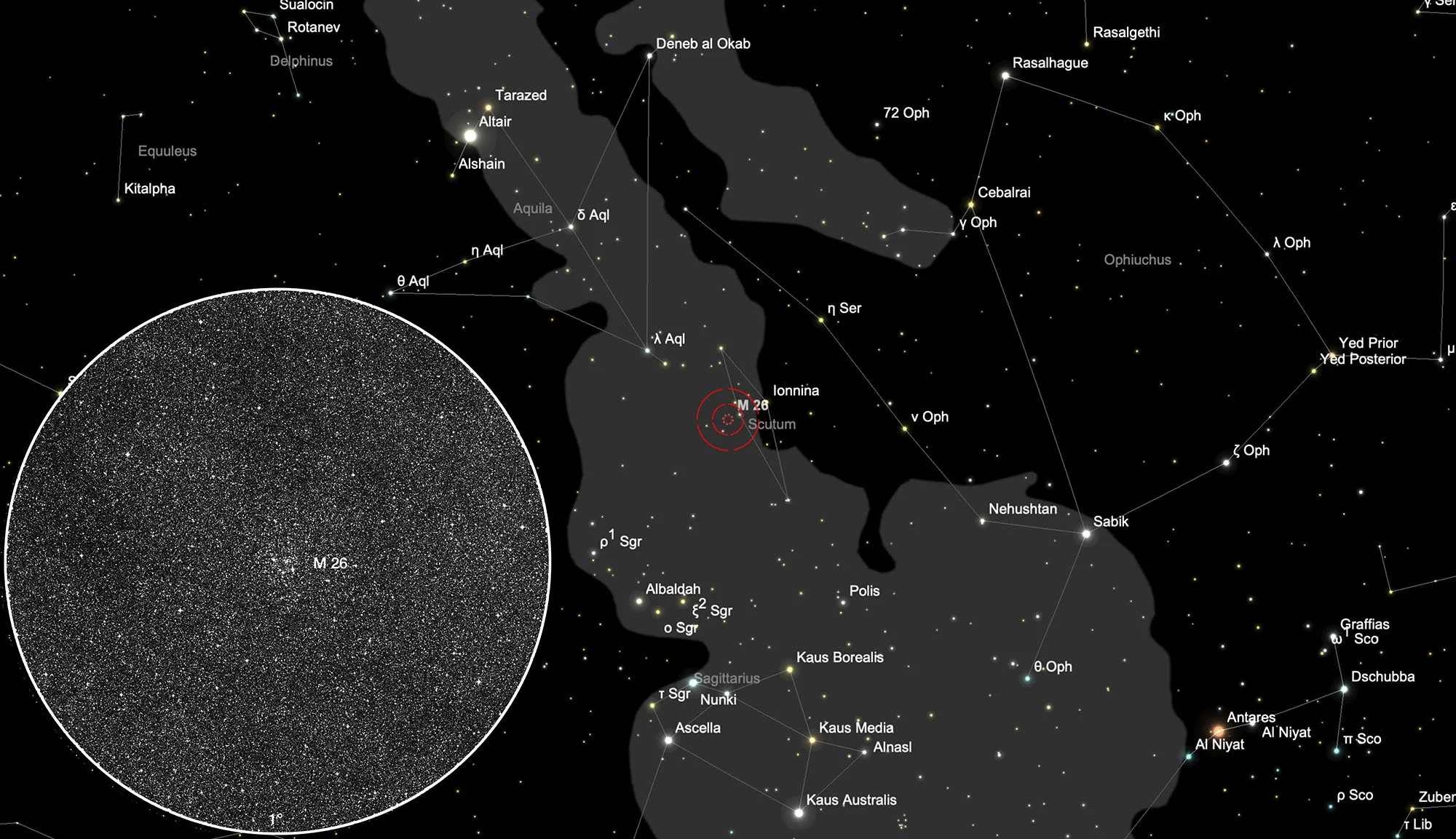Open Cluster Messier 26
Object Description
The discovery of this open cluster is usually attributed to Le Gentil sometime before 1750. It was found by Messier on 20 June 1764. He described it as follows: «Indistinguishable with a 3.5 foot [focal length] telescope. He needs a better instrument. Does not contain nebula.» In his edition of his catalog, published in 1784, he wrote that he could see it well in a Gregorian telescope at 104x. [4]
Kharchenko et al. state in the «Catalogue of Open Cluster Data (COCD)» [257] published in 2005 a distance of 1582 pc (5160 ly) and an estimated age of logt = 8.3 (108.3 ≈ 200 million years). In WEBDA [138] one finds a distance of 1600 pc (5219 ly) and the age logt = 7,931 (107,931 ≈ 85 million years).
| Designation | NGC 6694 |
| Type | OCL (I1m) |
| Right Ascension (J2000.0) | 18h 45m 15.0s |
| Declination (J2000.0) | -09° 23' 06" |
| Diameter | 8 arcmin |
| Visual magnitude | 8.0 mag |
| Metric Distance | 1.582 kpc |
| Dreyer Description | Cl, cL, pRi, pC, st 12…15 |
| Identification, Remarks | h 3758; GC 4432; M 26; OCL 67 |
Finder Chart
The open star cluster M 26 is located in the constellation Scutum south of the shield cloud. Extend the line of the stars Ionnina (α Scuti) - δ Scuti by about 50 arc minutes to the southeast. He is hiding there in the starry area of the Milky Way. M26 is best observed in the months of February to December.
